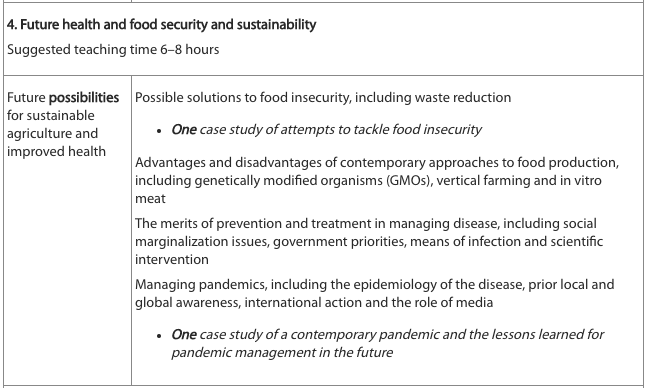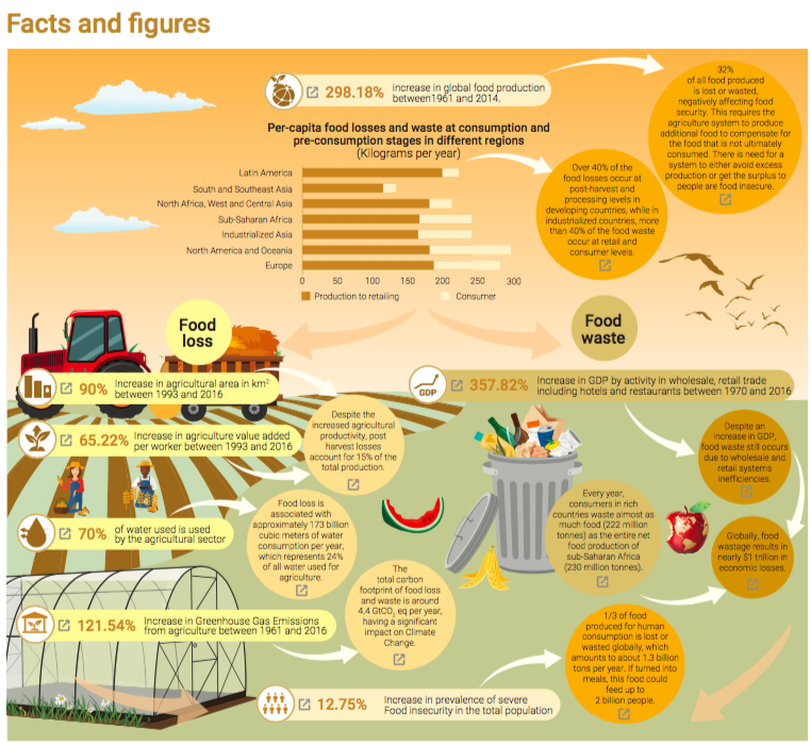4. Future health and food security and sustainability
Syllabus Link: Future possibilities for sustainable agriculture and improved health
Possible solutions to Food Insecurity
|
|
|
|
Activity: Possible Solutions to Food Insecurity
Terms: Food aid, trade and fair trade
Analysis: Advantages and disadvantages of food aid
|
|
|
|
One case study of attempts to tackle food insecurity
|
|
|
Case Study: Rwanda food insecurity case study notes
Webpage: FAO in Rwanda
Summary: Rwanda and the FAO
PDF: FAO -Rwanda Food Newsletter (pgs 5&6)
Food Waste Reduction
|
|
|
Contemporary Approaches to Food Production
Advantages and disadvantages of contemporary approaches to food production, including genetically modified organisms (GMOs), vertical farming and in vitro meat
|
|
|
|
Future of Food Debate
‘Contemporary approaches to agriculture will ensure future global food security'
Planner: Google doc debate planner
Resources: Google drive debate resources
Graphic: UN SDGs and Food
‘Contemporary approaches to agriculture will ensure future global food security'
Planner: Google doc debate planner
Resources: Google drive debate resources
Graphic: UN SDGs and Food
Genetically Modified Organisms (GMO's)
|
|
|
|
Vertical Farming
|
|
|
|
In Vitro Meat
|
|
|
|
The Merits of Prevention & Treatment
The merits of prevention and treatment in managing disease, including social marginalization issues, government priorities, means of infection and scientific intervention
|
|
|
|
Managing Pandemics
Managing pandemics, including the epidemiology of the disease, prior local and global awareness, international action and the role of media
|
|
|
Reading: Epidemics vs pandemics
Managing HIV AIDs
|
|
|
|
Factsheet: AIDs by numbers 2019
Visualizations: Our World in Data - HIV AIDS
Reading: The global geography of AIDS
|
|
|
|
Webpage: UN AIDS Data Hub - Thailand
Wiki: Media portrayal of HIV AIDs
Webpage: Public awareness - How TV & movies shaped perceptions of HIV AIDS
|
|
|
|

